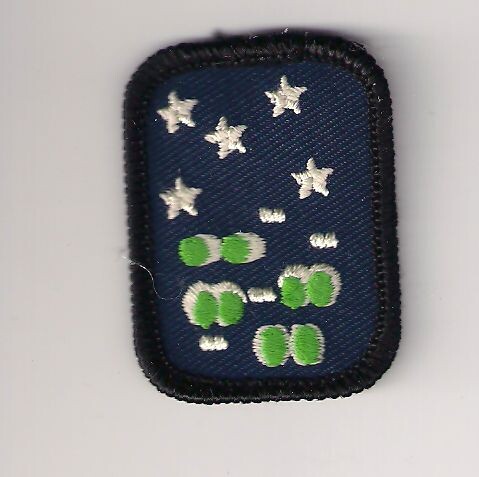Nightwatcher GSCSNJ Council own IP (Original)
1. Learn how to use a flashlight. Try to build your own flashlight. Test them and see which one works better.
2. Take a nighttime and dawn hike with an adult who can identify night sights and sounds. Make sure you only bring one or two flashlights. Listen and observe. Chart the differences in what you see, hear, smell and discover. Which animals did you see? How is the environment different that daytime?
3. Play games that can only be played at night; manhunt, flashlight tag, or create your own. Follow Safety Wise.
4. Plan and carry out a nighttime scout's own during a camping trip, camporee or special nighttime event. If you have a campfire try using different chemicals to make colored flames. Cook a midnight snack; s’mores, banana boats, or kick the can. Try making a snack without a fire.
5. Go see a fireworks display or light show. Or create your own light show.
6. You can learn many things about nocturnal animals without seeing them. Learn about owl pellets. Dissect a couple and observe what you find.
Technology
1. Use a telescope to observe the night sky, Compare how different things look in comparison to the naked eye.
2. Learn about night animals online.
3. Go online and learn about events that only occur at night; ie. late night shows, fireworks or midnight movies.
4. Learn about current NASA projects, such as Hubble or ISS. Watch a shuttle launch live or telecast.
Service Projects
1. Create glow in the dark constellations and planets. Donate them to younger children.
2. Take night pictures using a flash with your camera. Bind the pictures into a book and write a short bedtime stories. Donate the book to a school, camp or nature center.
3. Volunteer at a camp by running your own night hike or dawn hike. Set up glow in the dark cardboard eyes or animal silhouettes. Develop a "script" for your hike.
4. Run "night" games with a group of younger girls. Make the games simple, safe and short.
Career Exploration
1. Learn about jobs that can only be done at night.
2. Meet someone who works with nocturnal animals. Learn about what education was required and what they do.
3. Meet an astronomer, NASA employee or someone who works in a space program. Interview, shadow, or sit for a lecture with that person.
